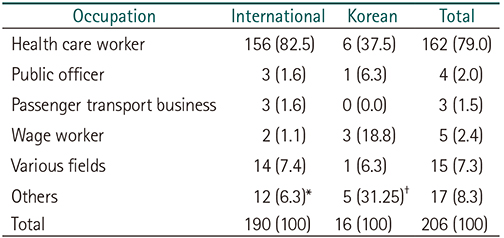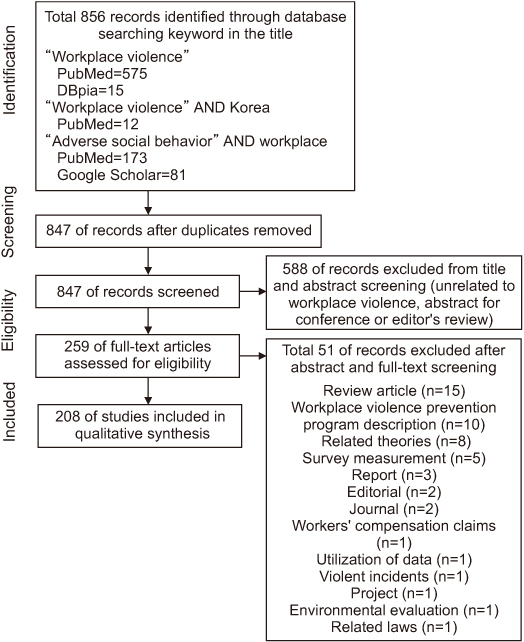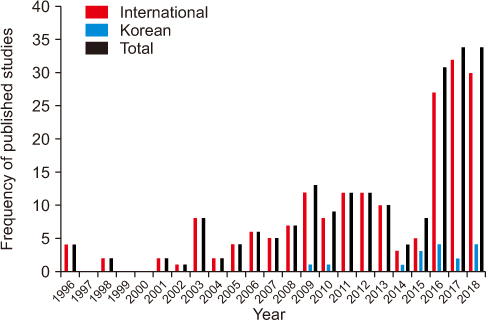Department of Occupational and Environmental Medicine, Ewha Womans University College of Medicine, Seoul, Korea.
Copyright © 2019. Ewha Womans University School of Medicine
This is an Open Access article distributed under the terms of the Creative Commons Attribution Non-Commercial License (http://creativecommons.org/licenses/by-nc/4.0/) which permits unrestricted non-commercial use, distribution, and reproduction in any medium, provided the original work is properly cited.
Values are presented as number (%).
*Addiction treatment center staff, emergency medical workers, firefighters, police officers, social worker, educational worker, female worker, adolescent worker, retail and service workers, fishery worker, and sex worker.
†Call center worker, bank clerk, substitute driver, toll collector, and manufacturing worker.




Values are presented as number (%).
*Addiction treatment center staff, emergency medical workers, firefighters, police officers, social worker, educational worker, female worker, adolescent worker, retail and service workers, fishery worker, and sex worker.
†Call center worker, bank clerk, substitute driver, toll collector, and manufacturing worker.
Values are presented as number (%).
Values are presented as number (%).
*Reasons for not reporting violence.
Values are presented as number (%). *Addiction treatment center staff, emergency medical workers, firefighters, police officers, social worker, educational worker, female worker, adolescent worker, retail and service workers, fishery worker, and sex worker. †Call center worker, bank clerk, substitute driver, toll collector, and manufacturing worker.
Values are presented as number (%).
Values are presented as number (%). *Reasons for not reporting violence.